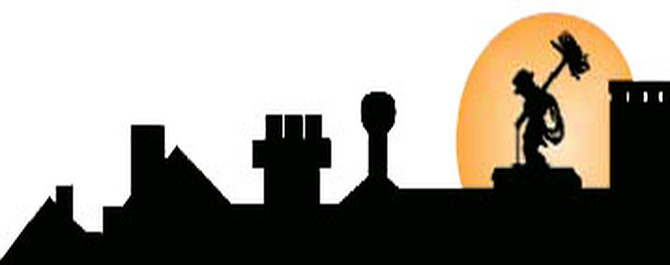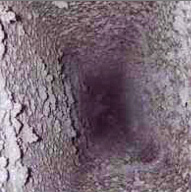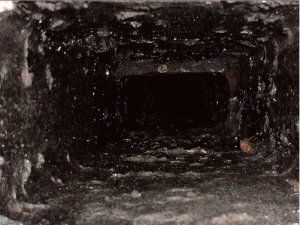Chimney Sweeping
Chimneys Plus guarantees that every chimney cleaning will come with our standard 19-point inspection, whether it is your first cleaning or you have been a customer of ours for years.
Chimney Sweeping is one of the most important factors to your home staying safe. Whether it is a stove, fireplace, or oil burner chimney, regular maintenance is an absolute must.
Creosote forms as the by-product of combustion of solid materials. The purpose of the chimney is to exhaust that by-product out of the home. Depending on the quality of the fuel you are burning, and the temperature in which you are burning that fuel, creosote will form on the walls of the chimney in any of 3 stages:
1st Degree Creosote is very light, similar to the fly-ash that accumulates from burning wood completely. It is a flakey material that brushes easily off of the walls of the chimney. This occurs from complete combustion of fuel, and is safe as long as it is cleaned out once per year with a standard chimney brush.
Ideally, this is what you want to end up with at the end of a burning season.

2nd Degree Creosote forms when complete combustion is not taking place in a fire. Often this is due to the fire not burning hot enough, which is generally a result of a lack of air to the fire, or burning wet wood.
When 2nd Degree Creosote forms, it looks very similar to burnt toast or paper machete, with a shiny black surface. The smoke from the fire cannot stay hot enough to stay in a gaseous form, so it liquifies into a tar-like substance, and runs back down the chimney. As it begins to heat back up, the liquified creosote begins to bubble and harden, and takes a solid form when it cools.
Depending on how bad the buildup is, a standard chimney brush can take care of this degree of cleaning. If it is a more severe case of 2nd Degree buildup, a rotary loop may need to be used. This is a stainless steel cable that attaches to a drill to spin quickly and break the soot away from the walls of the chimney.
3rd Degree Creosote occurs from the same reasons that 2nd Degree Creosote forms from, primarily that the exhaust is not hot enough to stay in a gaseous form until it reaches the top of the chimney.
The biggest difference with 3rd Degree Creosote is that the chimney is also not hot enough to reheat the tar-like substance, and instead, the substance cools and hardens directly to the walls of the chimney. The finished appearance is simply a shiny black layer on the walls of the chimney, as if they had been coated with tar.
While 3rd Degree Creosote appears to be the least harmful, it is actually the most dangerous form of creosote, and is the hardest to clean. A layer of 3rd Degree Creosote can easily catch fire, sometimes simply from an ember landing on it, creating ignition. The creosote is highly flammable, and if it is not controlled in a short period of time, can lead to severe flue tile damage, and even a house fire.
Cleaning 3rd Degree Creosote is very difficult, and often requires chemicals to properly remove it from the chimney lining. Chains attached to a drill can be used to break away the outer layer of the flue tile, however, this runs the risk of cracking flue tiles and damaging the chimney lining.
As always, we will consult you on the current condition of your chimney as well as what is the best method for cleaning your chimney at the time of your servicing appointment.



